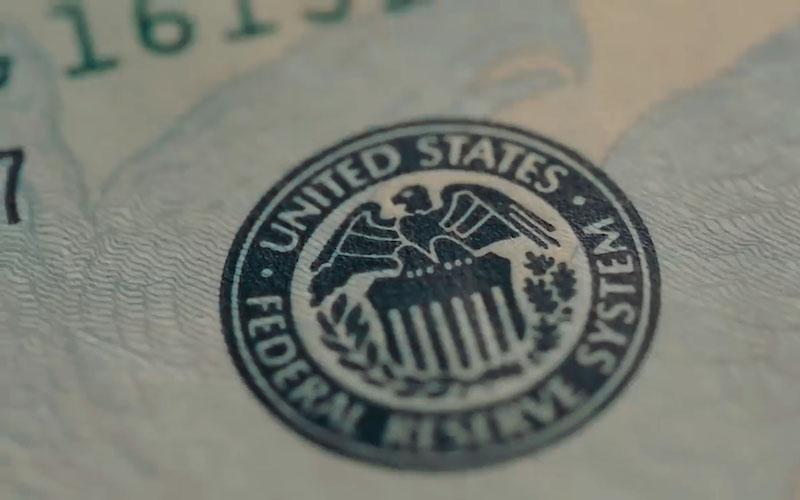Swissquote Bank: Expectations of a Fed rate cut are rising, and a weaker dollar is boosting global markets
2025-08-13 18:07:09

However, this has not occurred. Investors have instead raised their expectations for a September rate cut, arguing that inflation on imported goods remains below feared levels as businesses continue to bear the cost of tariffs. As a result, the 2-year Treasury yield fell after the data was released, pushing the probability of a September rate cut up from 80% to 94%, and the US dollar retreated below its 50-day moving average. The index reversed its summer upward trend last week, setting the stage for further dollar weakness. A set of data on PCE (personal consumption expenditures), employment, and the CPI (consumer price index) remains to be released before the next Fed meeting (although there are reports that the new director of the Bureau of Labor Statistics is willing to suspend the release of monthly employment data). Nevertheless, a 25 basis point rate cut in September is more likely.
The story doesn't end there. U.S. Treasury Secretary Scott Bessant is now calling for a significant interest rate cut in September—a 50 basis point reduction would help offset the weakening of U.S. employment caused by trade policy. This sets the stage for a further steepening of the yield curve: rising expectations of rate cuts will pull down the short end of the curve, while the surge in U.S. debt will prevent a similar decline at the long end. Some hope that the Trump administration's tariff revenue—as well as direct payments from companies like Nvidia and Advanced Micro Devices for their overseas operations—will bolster Treasury coffers, reduce demand for long-term Treasury bonds, and help control the long end of the curve. For now, investors are more motivated by the prospect of impending rate cuts supporting economic growth than by debt concerns, even if those concerns are imminent.
Yesterday, the S&P 500 hit a record high, with mid-cap stocks rising more than 2% and small-cap stocks soaring 3%. Bullish sentiment prevailed amid a weaker dollar, strong corporate earnings, expectations of interest rate cuts, and continued favorability for technology stocks.
Speaking of the US dollar, its weakening continues to support major currencies. The euro extended its gains against the dollar, breaking above its 50-day moving average, while the British pound tested strong resistance near the 1.35 level—also the 50-day moving average—which GBP bulls are likely to overcome. Yesterday's much stronger-than-expected UK employment data, coupled with rising inflationary pressures, fueled expectations that the Bank of England will delay its November rate cut. This combination of a more dovish Federal Reserve and a more hawkish Bank of England should support the British pound against the dollar and bring the 1.38 level back into view in the coming weeks. Elsewhere in the forex market, the Australian dollar strengthened against the US dollar despite the Reserve Bank of Australia's announcement of a rate cut yesterday and hints of further rate cuts to come.
A weaker dollar has made investing in emerging markets attractive again, lowering borrowing costs and the price of dollar-denominated raw material imports. Even better, declining inflationary pressures have created conditions for looser monetary policy. For example, the Brazilian central bank, capitalizing on a stronger real and lower import costs, lowered its benchmark interest rate from 11.75% at the beginning of the year to around 10% in August without triggering a rebound in inflation. Similar trends have been observed in Chile and Indonesia, where monetary stability has provided policymakers with room to cut interest rates and stimulate economic growth. It's no surprise, then, that the MSCI Emerging Markets Index has outperformed the S&P 500 this year, thanks to loose monetary conditions and the benefits of a weaker dollar—partially offsetting the drag from US trade policy.
A weaker dollar should also help put a floor under the oil price decline, making oil cheaper globally. OPEC raised its forecast for global oil demand growth by 100,000 barrels per day (bpd) to 1.4 million bpd, suggesting a tighter market than previously projected. The organization also expects non-OPEC oil supply to decrease by the same amount due to lower prices. However, given OPEC's vested interests, I remain cautious about its forecast—by comparison, the US Department of Energy recently raised its forecast for a global oil surplus this year to 1.7 million bpd. Nevertheless, I now believe that US crude oil prices shouldn't fall below $60 per barrel for a sustained period if the dollar continues to weaken—a positive adjustment compared to my previous view that a drop to $50 per barrel was possible.
In the short term, U.S. crude oil prices fell yesterday due to a surprising 1.5 million barrel increase in U.S. crude oil inventories last week. However, geopolitical risks remain skewed to the upside: the upcoming meeting between Trump and Putin is unlikely to produce any substantial progress on the Ukraine issue. If this is not the case, oil prices should rebound to $65/barrel and above.
- Risk Warning and Disclaimer
- The market involves risk, and trading may not be suitable for all investors. This article is for reference only and does not constitute personal investment advice, nor does it take into account certain users’ specific investment objectives, financial situation, or other needs. Any investment decisions made based on this information are at your own risk.





















